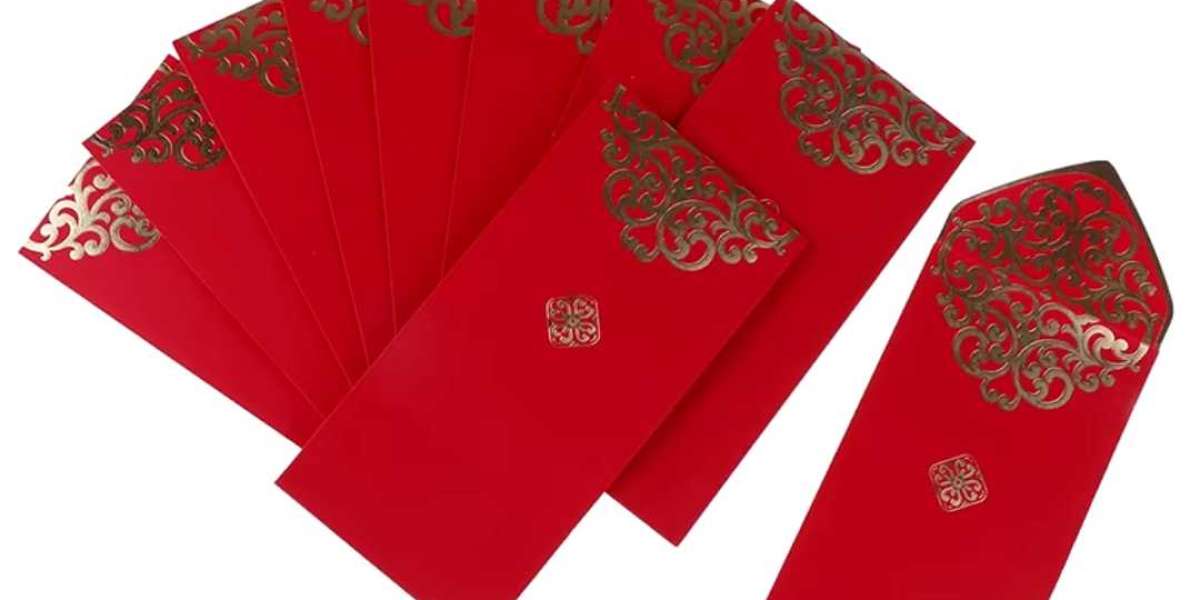Red envelope, known as hongbao in Mandarin, are an iconic symbol of Chinese culture. These vibrant little packets are often filled with money and given as gifts during festive occasions, most notably during Chinese New Year. But the red envelope is not just a simple gift; it carries deep cultural significance. In Chinese tradition, red is a color that symbolizes good fortune, happiness, and protection against evil spirits. The custom of giving red envelopes is not only a gesture of generosity but also a way to share blessings, happiness, and prosperity with loved ones.
The Cultural Significance of Red Envelopes
The red envelope tradition dates back over a thousand years. In ancient times, red was believed to have magical powers, capable of warding off evil spirits. During Chinese New Year, it was customary for elders to give red envelopes to children and younger relatives as a way of offering blessings for the coming year. These red envelopes were seen as a protective talisman, ensuring the recipient would enjoy good health, good fortune, and wealth in the months ahead.
The money inside the red envelope, often crisp new bills, symbolizes the wish for the recipient to prosper. The value of the money is secondary to the thought behind the gift. The act of giving is rooted in the belief that sharing wealth brings happiness and a positive flow of energy. The red envelope serves as a bridge between generations, allowing the elders to pass on their wishes of luck and good fortune to the younger ones.
How Red Envelopes are Used in Chinese New Year
Chinese New Year is the most popular occasion for giving and receiving red envelopes. The custom is especially important for families, where grandparents, parents, and even married couples give red envelopes to younger members of the family. The amount of money in the red envelope varies, but it’s important to avoid giving amounts that are associated with funerals, such as numbers with the digit four, which is considered unlucky in Chinese culture. The number eight, on the other hand, is regarded as especially auspicious and often chosen for red envelopes as it represents wealth and prosperity.
When it comes to the presentation, the red envelope is just as important as the money inside. The envelopes are often elaborately decorated with gold symbols of good fortune, such as dragons, koi fish, or images of the Chinese zodiac. The visual design of the red envelope is meant to amplify the good wishes for a prosperous and lucky year. In recent years, red envelopes have become more modern, with creative designs, including those featuring popular cartoons or themes. However, the core meaning remains the same: sharing joy, love, and prosperity.
Red Envelopes and Other Celebrations
Although Chinese New Year is the most well-known time for red envelopes, they are also given during other significant occasions. Weddings are another common event where red envelopes play a central role. It is a Chinese tradition for guests to present the newlyweds with red envelopes as a wish for a happy and prosperous marriage. The money inside the red envelope is often used to help the couple begin their new life together, contributing to wedding expenses or saving for the future.
Similarly, during birthdays, especially for children, elders might give red envelopes to pass on good wishes for the recipient’s health and well-being. In these cases, the red envelope not only brings luck but also conveys the importance of family and care.
The Modern Twist on Red Envelopes: Digital Red Envelopes
In today’s increasingly digital world, the tradition of red envelopes has evolved. While physical red envelopes are still exchanged in person, many people now send digital red envelopes via mobile apps, particularly during Chinese New Year. Platforms like WeChat have adopted the red envelope tradition, allowing users to send virtual red envelopes filled with money to friends and family with just a few taps on their phones. These digital red envelopes are often used in group chats or as part of virtual celebrations, making it easier for people to participate in the tradition even if they’re far from home or loved ones.
Despite the shift to digital, the essence of the red envelope remains unchanged. Whether physical or digital, the red envelope still symbolizes the same values: generosity, good fortune, and love. In fact, digital red envelopes have even added a layer of excitement to the tradition, with fun elements like games or the chance to receive unexpected “lucky” amounts. This modern twist ensures that the tradition continues to thrive and evolve alongside technological advancements.
The Joy of Giving Red Envelopes
While receiving red envelopes is a highlight of many celebrations, the joy of giving them is equally meaningful. The red envelope allows the giver to share their blessings, wishes, and good intentions. In Chinese culture, giving is seen as an act of kindness and love, and it is often said that the act of giving brings more happiness to the giver than the recipient. By giving a red envelope, you’re participating in a cycle of generosity that strengthens bonds with family, friends, and colleagues.
Even outside of family celebrations, red envelopes are sometimes exchanged in business settings. Employers may give red envelopes to employees as a token of appreciation for their hard work over the year. In this context, the red envelope serves not only as a symbol of good fortune but also as an acknowledgment of the recipient’s contributions.
Red Envelopes Around the World
While red envelopes are a central tradition in Chinese culture, the practice has spread across different countries and regions. In places like Hong Kong, Taiwan, Singapore, and Malaysia, giving red envelopes is also common during festive periods. Communities around the world that celebrate Chinese culture have embraced this tradition, bringing with it a sense of unity and joy. The red envelope transcends cultural and geographic boundaries, symbolizing good luck, prosperity, and positive energy no matter where it is given or received.
For those outside of Chinese culture, the concept of the red envelope may seem unfamiliar at first, but as global communication and cultural exchange continue to grow, the beauty of this tradition has found its way into other cultures. From multicultural New Year’s parties to international celebrations, the red envelope is a delightful reminder of the universal human desire to wish others well and spread happiness.
Conclusion
The red envelope is much more than just a festive custom; it is a deep-rooted tradition that embodies the values of luck, prosperity, and familial love. Whether exchanged during Chinese New Year, a wedding, or a birthday, the red envelope carries a message of goodwill that transcends time and culture. As the tradition continues to adapt to modern times, the red envelope remains a powerful symbol of generosity and connection, reminding us of the importance of sharing blessings and fostering positive relationships with those we care about.








